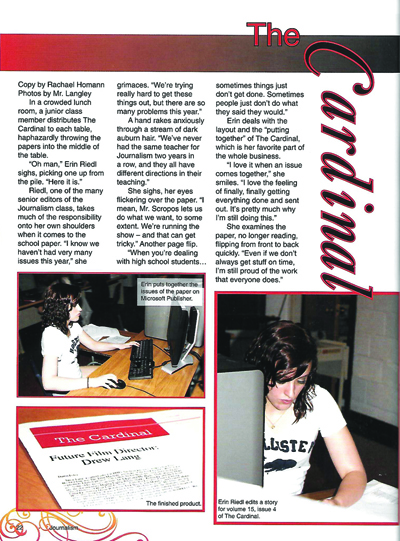
Creating yearbook stories to be read
Written by John Langley
Student leaders at summer yearbook workshops struggle with how to get their staffs to write quality copy. Part of the problem with writing copy involves content with boring generalizations, ho-hum quotations, lists of activities and participants, just statistics or records, and the cliché “we had a great season” (even though the team lost every game).
This stems from the problem of writing about topics. Yearbook staff members get assigned events and activities such as homecoming week, football, softball or Beta Club, and then try to itemize what is going on in that topic. The result – boring!
The solution – write stories! The yearbook is the story of what happened that year. Each spread tells a story. Each component of the spread (headlines, captions, copy, photos, graphic elements) all work together as a story package.
Creating the storytelling aspect of yearbook copy while focusing on the circular writing style can be done by treating the components of a spread as a package. As yearbook staff members and advisers, we know there are formulas for creating a story-based spread: copy written in the circular writing style from a human interest angle, the dominant photo representing the student from whose eyes the story is told, sidebars of mini-features representing other angles of the story, and headlines and captions to tie it all together.
This process gets students used to thinking about the spread as a storytelling package:
- Students start by looking at photos they have taken. For the initial assignment, students choose their own photos to use. They identify the who, what, when, where, why, how (5 w’s + h) of the photo. Students then work up storytelling captions that answer as much of the 5 w’s + h as possible without stating the obvious in the photo. Students are asked to keep the captions to two sentences.
- Next, the class does two or three themed photo assignments of three to five photos with captions for each photo. I choose the topics so they can possibly be used in the yearbook. For each assignment, I project students’ captioned photos during the next class period and they critique each other’s work – mentioning what they like about the photo and caption and what they think would the make the photo or caption better.
- Students are then introduced to the circular writing style where the focus is put on the opening and closing with good interviews to fill in the body. Attention is given to the concept of the entire spread working as a storytelling unit where all parts are united to tell the story of that angle. Since the writing process starts with interviews, staff members will interview a person based on the photos they have. It may be an interview with the person in the dominant photo, a teacher, activity sponsor or coach.
- Afterward, the students work on themed photo stories where they include five captioned photos and a passage that contains a solid opening and closing for the photo story. My classes did these in a classroom blog using Blogger (blogger.com), a free weblog publishing tool from Google for sharing text, photos and video. These packages are projected and critiqued.
- Students then return to the photo story and write a full article, adding body paragraphs to the opening and closing. Length of the copy is not important – there is no length to awesome! When students ask me how long the copy should be, I respond, “Yes.” After the quizzical look, I remind them that it can be a short awesome article, a medium awesome article, or a long awesome article – just follow the process, and it will be awesome. This version is projected and critiqued, then students go back and make suggested revisions to improve the stories. This instills the necessity to edit stories after the first draft.
- The last step is to drop the photos, captions, and copy into a spread based on the design theme for the year. Again, these are projected and critiqued.
The process may take two to three weeks, and sets the tone for quality stories throughout all components of the spread.
My tenure as adviser, like most advisers, saw a lot of new faces on the yearbook staff each year. After developing this strategy, writing copy was less daunting for students, and yearbook spreads became fun, just like yearbook.
The Yearbook Rocks Forum at yearbookrocksforum.wikispaces.com has become a great resource that both advisers and students from summer workshops and in the classroom have added to throughout the last few years. It has downloadable presentations, articles, and examples ranging from writing stories, writing captions, to photography, theme, and design.
Comments are closed.

